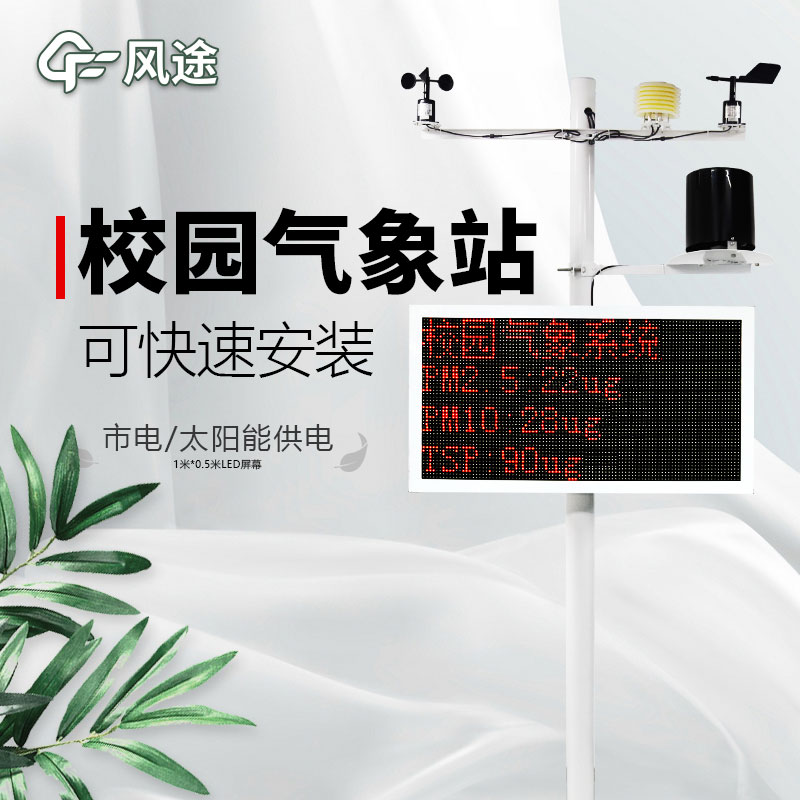Meteorological environment monitoring equipment supplier
Insist on doing high-precision customer favorite technology products
The campus small weather station is a set of simple automatic weather stations installed in the school. It is mainly used to measure atmospheric temperature and humidity, wind speed and direction and other meteorological parameters. It is characterized by simple structure, low cost and convenient use, and is suitable for observation in various environments. It is composed of sensor, cloud platform, power supply equipment and supporting instruments. It has the advantages of small size, light weight, stable performance, easy operation, high reliability and long service life. It is an independent system that can be networked through the network to achieve real-time monitoring. At the same time, it also has a variety of functions, such as data acquisition, storage, recording and alarm output, so that users can easily use these products to complete various operations. The product is generally connected to the background by wireless means, and can also be wired transmission mode, but it is recommended to choose wireless transmission, convenient and practical. As a new means of meteorological science popularization, campus station has a broad application prospect in schools. Mainly because of low cost, easy maintenance, suitable for large-scale promotion.
The role of campus small weather station:
1. Improve the quality of experimental teaching.
2. Promote research and innovation.
3. Enhance scientific and technological innovation capacity.
4. Improve the campus ecological environment.
5. Provide students with accurate and timely meteorological information.
6. It has important reference value for weather forecasting.
7. Can meet the needs of teaching, and can be used in other aspects of scientific research.
8. It is conducive to popularizing scientific knowledge and cultivating scientific spirit.
The following problems should be paid attention to during the construction of campus small weather stations:
1) The appropriate sensor should be selected according to the actual situation;
2) Select appropriate hardware circuits and software programs;
3) To do a good job of lightning protection;
4) Make reasonable use of existing resources.
